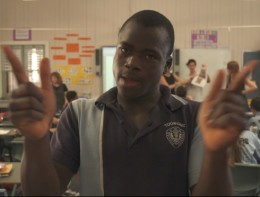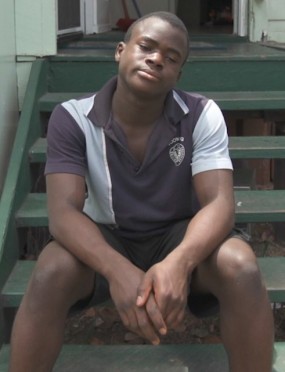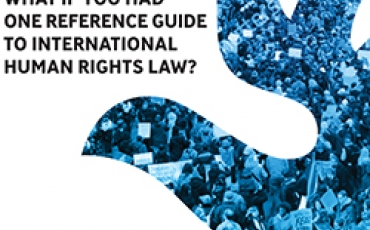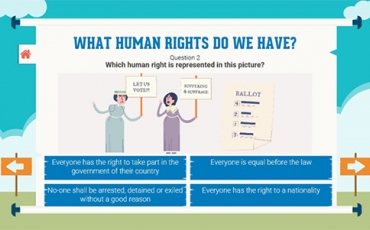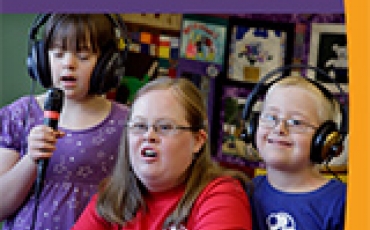RightsEd: Tackling Disability Discrimination in Sport
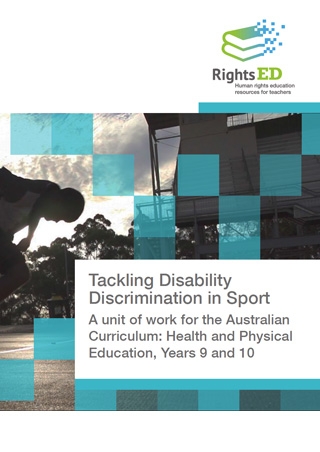
Contents
- Introduction
- Focus
- Teaching and Learning Activities
- Learning Outcomes
- Australian Curriculum Links – Health and Physical Education
- Tackling Disability Discrimination in Sport
Lessons
- Lesson 1: Introduction to discrimination
- Lesson 2: Disability rights in sport
- Lesson 3: Understanding the role of the Australian Human Rights Commission
- Lesson 4: Making a complaint to the Australian Human Rights Commission
- Lesson 5: Participation of people with disabilities in sport
- Lesson 6: Playing modified sports
Resources
- RightsED Resource Sheet: What is discrimination?
- RightsED Resource Sheet: Disability rights and sports
- RightsED Literacy Activity Sheet: Disability rights and sports
- RightsED Activity Sheet: Let me win
- RightsED Resource Sheet: Disability discrimination and making a complaint to the Australian Human Rights Commission
- RightsED Activity Sheet: Disability discrimination in sport – case studies
- RightsED Activity Sheet: Making a complaint to the Australian Human Rights Commission
- RightsED Activity Sheet: Newspaper article template
Introduction
Almost 4 million Australians live with disabilities. If we add families, friends and colleagues, the number of people affected by disability is larger still.
These lessons fit within the Years 9-10 Health and Physical Education curriculum. They address outcomes across both the personal, social and community health strand, and the movement and physical activity strand.
These lessons are based on the Australian Human Rights Commission’s 20 Years: 20 Stories film project, which celebrates 20 years of Australia’s Disability Discrimination Act 1992 (Cth). The Act provides protection from discrimination for people with disabilities.
Focus
Bang! It’s a sound most of us dread but for Sekou Kanneh, it would be a dream come true. The 14 year old is a sprinter but being deaf means he can’t hear the starting gun. Instead of waiting to see when his competitors start the race, Sekou asked for a flashing light to signal the start. Like everything he does, Sekou was in it to win it, and he didn’t disappoint.
This unit focuses on themes of mental health and wellbeing, relationships, and games and sports. Issues explored include the diversity of people who participate in sport, the impacts of discrimination and the change in participation in sports by people with disabilities over time.
Students will explore the following inquiry questions:
- How can disability discrimination occur in sport?
- What are the impacts of discrimination on an individual?
- How can discrimination be prevented?
- What are the roles of organisations and communities in preventing discrimination?
- How do diverse groups of people in Australia participate in sport?
- How has participation in sports by individuals with disabilities changed over time?
- How has the recognition of people with disabilities as active sports people changed over time?
Image Caption: Sekou Kanneh, Let me win, 20Years: 20 Stories Film Project, Australian Human Rights Commission.
Teaching and Learning Activities
These lessons can be taught as a unit or as individual lessons
- Introduction to discrimination
- Disability rights in sport
- Understanding the role of the Australian Human Rights Commission
- Making a complaint to the Australian Human Rights Commission
- Participation of people with disabilities in sport
- Playing inclusive sport
Learning Outcomes
As a result of this unit students will:
- Analyse the concept of disability rights and how to make sports inclusive.
- Investigate the barriers that people with disabilities face when participating in some sports, and the importance of modifying sports so that sports are accessible and inclusive.
- Identify the role of the Australian Human Rights Commission and its importance in dealing with cases of discrimination in sport.
- Experience a modified game of sport.
- Investigate how a prominent athlete with disabilities has contributed to a sport, or how the Paralympics has changed the recognition of people with disabilities as active sports people over time
- Analyse how participation in sports by individuals with disabilities has changed over time
Image Caption: Sekou Kanneh, Let me win, 20Years: 20 Stories Film Project, Australian Human Rights Commission.
Australian Curriculum Links – Health and Physical Education
| Content Description | Elaboration |
| Strand 1: Personal, Social and Community Health | |
| Sub-strand: Being Healthy, Safe and Active | |
| ACPPS089 Evaluate factors that shape our identities and analyse how individuals impact on the identities of others | analysing the role of family, friends and community in supporting an individual’s identities and proposing strategies to enhance their own and others’ wellbeing |
| Sub-strand: Contributing to Healthy and Active Communities | |
| ACPPS098 Critique behaviours and contextual factors that influence the health and wellbeing of their communities |
|
| Strand 2: Movement and Physical Activity | |
| Sub-strand: Moving our body | |
| ACPMP099 Perform and refine specialised movement skills in challenging movement situations |
|
| ACPMP104 Examine the role physical activity, outdoor recreation and sport play in the lives of Australians and investigate how this has changed over time |
|
| ACPMP107 Reflect on how fair play and ethical behaviour can influence the outcomes of movement activities |
|
General Capabilities
The general capabilities emphasised in this unit of work are Ethical Understanding, Personal and Social Capability, Literacy and Information and Communication Technology (ICT) Capability.
Tackling Disability Discrimination in Sport
| Unit description |
|---|
|
These lessons align with the Years 9-10 Health and Physical Education curriculum. They address outcomes across both the personal, social and community health strand, and the movement and physical activity strand. They are related to the themes of mental health and wellbeing, relationships, games and sports. Issues explored include the diversity and inclusivity of people who participate in sport, the impacts of discrimination, and the change in participation in sports by people with disabilities.
|
| Resources: | Vocabulary: |
|---|---|
| Videos Let Me Win, Twenty Years: Twenty Stories video (3 mins 14 Sec) http://youtu.be/8s2VhvivNpQ Film transcript and audio description is available at http://www.humanrights.gov.au/twentystories/videos.html Activities Literacy Activity Sheet: Disability rights and sports Activity Sheet: Let me win Activity Sheet: Making a complaint to the Australian Human Rights Commission Activity Sheet: Disability discrimination in sport - case studies Activity Sheet: Newspaper article template Resources Resource Sheet: What is discrimination? Resource Sheet: Disability rights and sports Resource Sheet: Disability discrimination and making a complaint to the Australian Human Rights Commission Additional Resources Australian Paralympic Committee athlete profiles http://www.paralympic.org.au/athletes Specialised sports equipment e.g. goalball, blindfolds, hearing blockers |
Accessibility Barrier Disability Disability discrimination Disability Discrimination Act Discrimination Inclusion Modified sport Participation |

